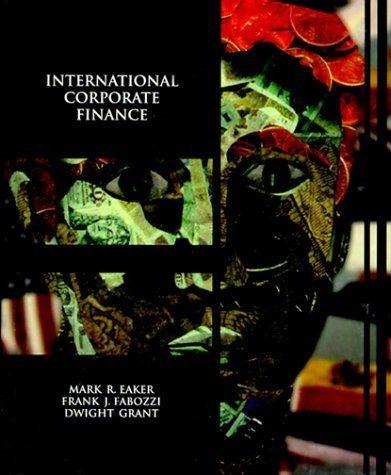Question
Dragon Associates, Inc. (Dragon), a private company with a calendar year end, is a manufacturer of exterior building products. On January l, 2015, Dragon granted
Dragon Associates, Inc. (Dragon), a private company with a calendar year end, is a manufacturer of exterior building products. On January l, 2015, Dragon granted 100,000 non-qualified stock options under its 2015 stock incentive plan (the Plan) to key employees. Dragon can only settle the stock options by issuing common stock. The fair market value of Dragon's underlying stock on January l, 2015 was $12 per share. The fair value of the stock options estimated using the Black-Scholes model is $4 per option on January l , 2015.
Some of the stock options are time-vesting options, and some are performance-vesting options. A summary of the options' terms is as follows:
Time-vesting options 5 years
Date of grant: January 1, 2015 (50% 50,000 time vesting)
Exercise price: $10 per share
Vesting (must be employed upon vesting):
20 percent per year on each anniversary after the date of grant, OR
Performance-vesting options
Date of grant: January 1, 2015 (50%= 50,000 performance vesting)
Exercise price: $10 per share
Vesting (must be employed upon vesting):
20 percent per year, contingent on achievement of annual EBITDA targets (which are specified in the grant notification and vary each year from 2015 through 2019, and also have a cumulative catch-up feature such that EBITDA shortfalls in any given year can be 'made up' through EBITDA surpluses in future years), OR
Upon a change in control or IPO, the installment of options (1) associated with the year in which the change in control or IPO occurs, and (2) associated with future years' EBITDA targets become immediately vested and exercisable.
During 2015, it was not probable that Dragon would meet any year's EBITDA target, or that a change in control or IPO would occur.
During 2016 and 2017, it is still not probable that Dragon would meet any year's EBITDA target (either individually or cumulatively). However, on August 31, 2016, Dragon announced its intention to undertake an IPO of additional shares of common stock.
The terms of the IPO are the authorization of 200,000 shares of additional shares of common stoc with a par value of $1 and the issuance of 70,000 shares at $15 per share fee-paid-from proceeds to the investment banking firm. The IPO was completed on December 31, 2016, and Dragon's stock began trading in December 31, 2016.
None of the options have been exercised to date. As such, the company's bookkeeper did not make any entries in the 2015 or 2016 trial balance related to the stock options. The bookkeeper is waiting for you to make the entry related to the IPO. The books have been closed for 2015 but not for 2016.
Write a memo to the file discussing the relevant issues and proper accounting treatment.
Consider the following:
Stock options what is the proper accounting treatment and why. What, if any, journal entries are required and in what year. Is there any income tax effect?
IPO- what, if any, journal entries are required and in what year? Is there an income tax effect?
Provide support and proper citations (eg. ASC 718-xx-xx-xx) and discuss the reasoning for your conclusions.
Step by Step Solution
There are 3 Steps involved in it
Step: 1

Get Instant Access to Expert-Tailored Solutions
See step-by-step solutions with expert insights and AI powered tools for academic success
Step: 2

Step: 3

Ace Your Homework with AI
Get the answers you need in no time with our AI-driven, step-by-step assistance
Get Started


